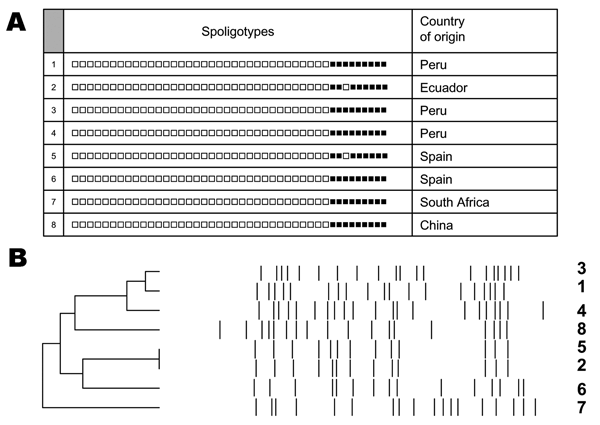Volume 12, Number 1—January 2006
Letter
New Route of Importation of Mycobacterium tuberculosis Beijing Genotype
Figure

Figure. A) Spoligotypes from Mycobacterium tuberculosis (MTB) clinical isolates. Black boxes indicate hybridization with the corresponding spacer in the directed repeats region, and white boxes indicate the absence of hybridization. The country of origin and identification number for each patient are indicated. B) Similarity dendrogram of restriction fragment length polymorphism types obtained with MTB clinical isolates. Numbers on the right correspond to patient identification numbers.
1Tuberculosis Molecular Epidemiology Study group (in alphabetical order): Sandra Andrés, Araceli Arce, Emilio Bouza, Fernando Chaves, Darío García de Viedma, Jesús Iñigo, Elia Palenque, Elena Rodríguez, M. Jesús Ruiz Serrano.
Page created: February 21, 2012
Page updated: February 21, 2012
Page reviewed: February 21, 2012
The conclusions, findings, and opinions expressed by authors contributing to this journal do not necessarily reflect the official position of the U.S. Department of Health and Human Services, the Public Health Service, the Centers for Disease Control and Prevention, or the authors' affiliated institutions. Use of trade names is for identification only and does not imply endorsement by any of the groups named above.